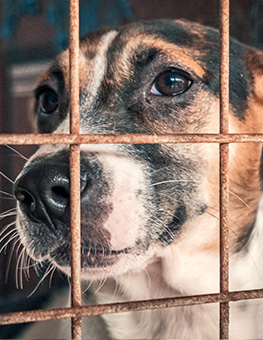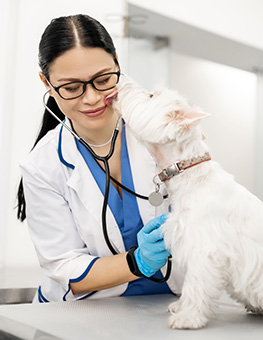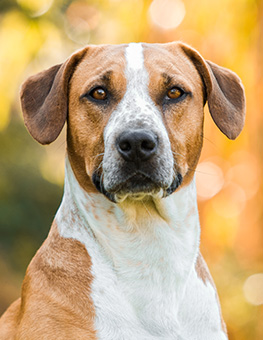Protect Your Dog From the Flu
If you think flu season affects humans, think again. There are strains of dog flu as well and it’s up to you to keep your dog’s health in check.
When flu season rolls around, you’re always on top of it, supplying yourself with Vitamin C, hand sanitizer, tissues, cough drops, and flu shots. But have you ever thought about your dog’s health during flu season? Though it may seem strange, a certain strain of flu exists that is spread easily throughout the dog population, and the disease can be very serious. It’s up to you to make sure that throughout flu season your canine companion is properly equipped to fend off this dog virus.
- It’s important to first understand how dogs catch canine flu. Much like in humans, the disease is spread through the air, borne in infected particles from sneezing, coughing, and other respiratory emissions.
- Since the disease is airborne and spread through the respiratory system, it is most easily transmitted in places where many dogs live in close quarters. Outbreaks have been known to occur most often in kennels, at dog tracks, and at dog shows.
- If your neighbor’s dogs get canine flu, make sure to keep your dog away from them, as the flu can spread very easily. Likewise, if your dog has the flu, let your neighbors know and keep your dog away from other canines.
- In addition to airborne transmission, dog flu can be spread by contact with contaminated surfaces as well. Make sure your furry friend doesn’t share items with others that may have this dog virus, as this can pass along the infection. Soap or other cleaners can help decontaminate anything that a sick dog has come into contact with.
- Knowing the symptoms of dog flu is essential in protecting your dog’s health. In many mild cases, your dog will not even show symptoms, and will get over the virus fairly easily. In more severe cases, though, the symptoms are similar to human flu: coughing, sneezing, runny nose, fatigue. In the worst cases, there will might be a high fever, difficult breathing, pneumonia, and bleeding in the lungs.
- If you observe any of these symptoms in your dog or suspect dog flu in any way, you should take your pet to a veterinarian, who can diagnose him properly. There’s no cure for this dog virus, but there is a lot you can do to help your pet stay comfortable. Just like humans, a good prescription for a flu-ridden dog is a propensity of fluids, rest, and healthy food. In more severe cases, such as those where pneumonia or other secondary infections develop, additional treatment may be necessary. This can include antibiotics or supplementary oxygen.
- In most cases, the flu will should subside between ten and thirty days after initial symptoms. After this, your dog will should have built up an immunity that can last up to two years. This is no reason to let down your guard, though. Canine flu is a young and rapidly evolving disease. Precautions should always be taken against it. If you have this down, you can help your dog stay healthy and safe!

















